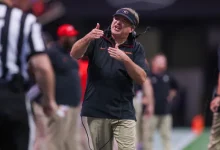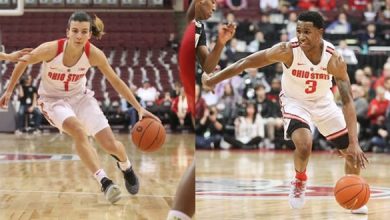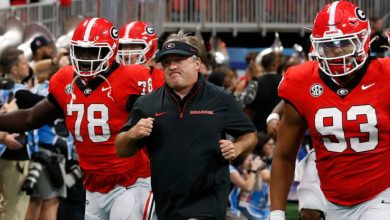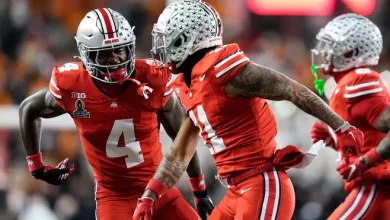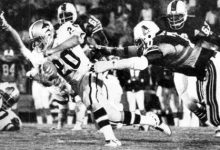Quarterback Caleb Williams reportedly sought to avoid being drafted by the Bears, according to revelations from a recently released book.
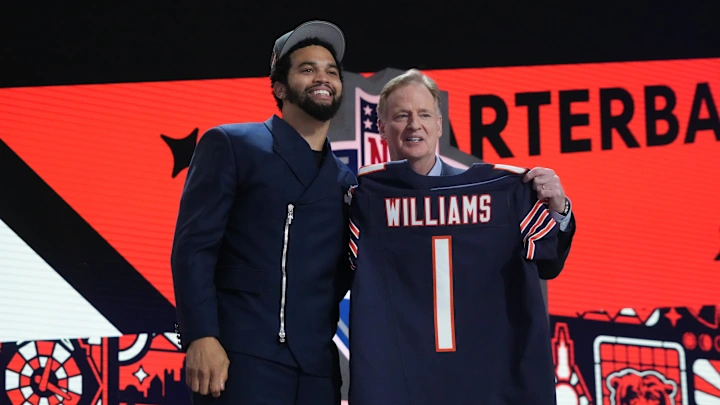
In the months leading up to the 2024 NFL Draft, speculation swirled around USC quarterback Caleb Williams and his potential landing spot. As the presumed No. 1 overall pick, Williams was projected to join the Chicago Bears—a team that had never developed a true franchise quarterback and held a history of organizational instability. But a recently released book has added a new twist to the story, alleging that Williams and those close to him privately sought to avoid Chicago, fearing it could hinder his career before it even began.
The book, which provides an inside look into the 2024 draft process, offers detailed accounts of how the Williams camp explored potential ways to steer him away from the Bears. Though Williams ultimately landed in Chicago as expected, the revelations raise serious questions about the franchise’s reputation among elite prospects and highlight the immense pressure facing both player and team as they begin a new chapter together.
A Quarterback Worth the Fuss
There’s little debate about Caleb Williams’ talent. The 2022 Heisman Trophy winner dazzled during his two seasons at USC, compiling over 8,000 passing yards, 72 touchdowns, and just 10 interceptions while adding 21 rushing scores. His combination of arm strength, mobility, creativity, and leadership made him the consensus top quarterback in the 2024 class—and one of the most coveted prospects in years.
What separates Williams from past top picks is his savvy approach to branding, business, and control over his future. He signed lucrative NIL deals at USC, hired an elite representation team, and often spoke about building a legacy akin to Tom Brady or Patrick Mahomes. With such a long-term vision in mind, the idea of landing in a dysfunctional environment like Chicago naturally sparked concern.
The Book’s Bombshell: Avoiding the Bears
According to the book, which features anonymous interviews with NFL executives, scouts, agents, and people within Williams’ inner circle, the quarterback’s camp explored options to discourage the Bears from selecting him with the first pick. Though Williams never publicly voiced any opposition to joining Chicago, privately there was trepidation about the franchise’s history with quarterbacks and its lack of offensive continuity.
One excerpt claims:
“Williams’ advisors viewed Chicago as a risky destination for a generational talent. There were backchannel conversations suggesting they would prefer almost any other team with a more stable infrastructure.”
Another passage details how the Williams camp considered using pre-draft workouts, media availability, and private meetings to subtly dissuade Chicago’s front office—mirroring tactics previously used by prospects like Eli Manning and John Elway to avoid unfavorable teams.
While there was no formal ultimatum issued to the Bears, the message was reportedly clear: if Williams had his way, he wouldn’t be heading to the Windy City.
Why the Hesitation?
To understand the reluctance, one need only look at the Bears’ track record. Since 2000, Chicago has cycled through over 30 starting quarterbacks. Despite having multiple high draft picks over the years, they’ve consistently failed to develop long-term talent at the position.
Mitchell Trubisky, selected No. 2 overall in 2017 ahead of Patrick Mahomes and Deshaun Watson, flamed out after four inconsistent seasons. Justin Fields, drafted in 2021 with similar fanfare, showed promise but was traded after just three years due to organizational turnover and subpar support.
Offensive coordinators have come and gone. Head coaches have been shuffled. The team has struggled to build a modern offense around its quarterbacks. In that context, the Williams camp’s concern seems not only reasonable—but rational.
Playing the Game: Can Prospects Control Their Fate?
Historically, NFL players have had little say in where they begin their careers. The draft system gives teams immense power, and players are expected to adapt regardless of the situation. However, exceptions exist.
John Elway famously refused to play for the Baltimore Colts in 1983, forcing a trade to the Denver Broncos. Eli Manning did the same with the San Diego Chargers in 2004, eventually landing with the New York Giants. More recently, top prospects have skipped Combine interviews or workouts with certain teams, subtly shaping their draft path.
The new book suggests Caleb Williams contemplated a similar approach—not to the point of public defiance, but through strategic maneuvering behind the scenes. His leverage was greater than most prospects, thanks to his star power, NIL earnings, and long-term vision. Still, he ultimately chose not to wage a public battle, likely to avoid alienating fans or appearing entitled.
Chicago’s Countermove: Creating a Safe Landing Spot
Aware of the concerns surrounding their franchise, the Bears made a concerted effort to present themselves as a viable destination for Williams. Leading up to the draft, they traded Justin Fields to the Pittsburgh Steelers, signaling a clean slate for the incoming quarterback. They revamped their offensive staff, hiring Shane Waldron as offensive coordinator—a coach with a quarterback-friendly system and a track record of success in Seattle.
Most importantly, they surrounded Williams with weapons. The Bears traded for veteran wide receiver Keenan Allen, drafted Rome Odunze ninth overall, and already had DJ Moore in place. Tight end Cole Kmet and running back D’Andre Swift round out a skill position group that is among the best Chicago has fielded in decades.
Their goal was clear: change the narrative. Show Williams—and the league—that Chicago is no longer where quarterbacks go to die.
Publicly, All Is Well
Since being drafted, Williams has been all smiles. He’s said all the right things about the city, the franchise, and the opportunity ahead. He’s embraced the passionate fan base, praised the Bears’ roster, and spoken optimistically about the future.
If there was tension behind the scenes, it’s been buried beneath professionalism and polish. But fans now reading the book are wondering what could have been—what might still linger beneath the surface.
Did Williams truly want to play for the Bears? Or did he simply accept an inevitable outcome once attempts to avoid it failed?
The Pressure on Both Sides
Whether or not Caleb Williams initially wanted to be in Chicago, he’s here now—and expectations couldn’t be higher. He’ll be judged not only on wins and losses, but also on whether he can finally lift the “quarterback curse” that has haunted the franchise for decades.
For the Bears, the stakes are equally high. They didn’t just draft a quarterback. They drafted the quarterback. One who reportedly considered avoiding them. One who could become the face of the NFL—or the latest chapter in a long line of misfires.
If Chicago gets this wrong, the ramifications will be severe. General manager Ryan Poles and head coach Matt Eberflus have tied their futures to Williams. A failure would likely result in sweeping changes and another rebuild.
Legacy at a Crossroads
Caleb Williams now has the power to reshape history—not just his own, but that of an entire franchise. If he succeeds, he’ll be remembered as the player who overcame the ghosts of quarterbacks past and brought Chicago into a new era of relevance. If he fails, the whispers from that new book will grow louder, turning into a haunting refrain: He never wanted to be here in the first place.
In that sense, Williams’ arrival in Chicago is not just a football story. It’s a drama about destiny, legacy, and the fine line between greatness and what might have been.
The book may have lifted the curtain on draft day doubts, but the real story begins now—on the field, in Soldier Field, with a franchise and a quarterback who need each other more than ever.

